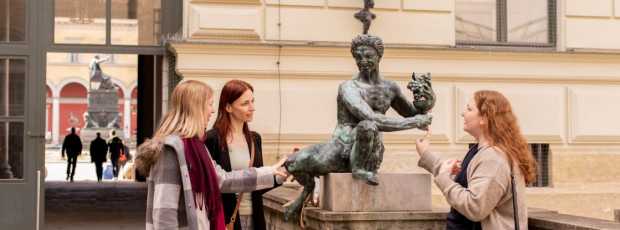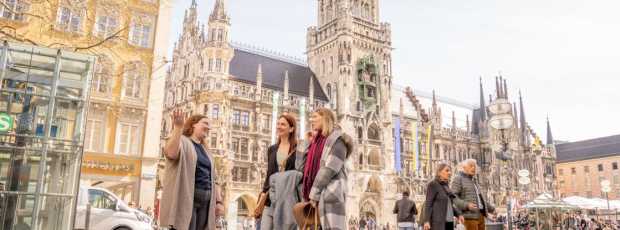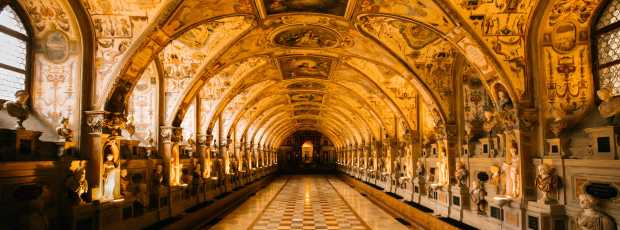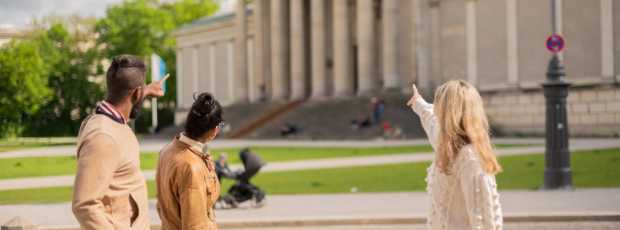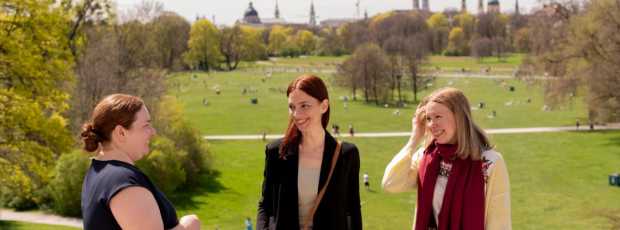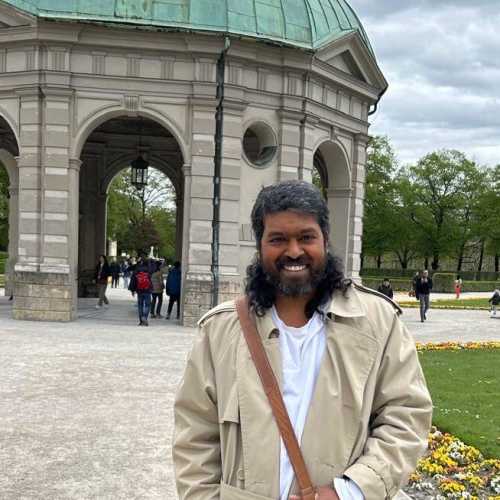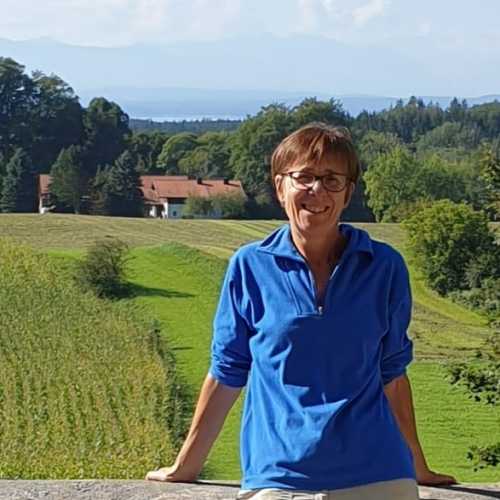Table Of Contents
- Munich's Town Hall and the City Centre: Where History Meets Daily Life
- Olympic Park: The City's Playground for Sports and Architecture
- Why You Should Visit the Deutsches Museum and the German Museum
- Exploring Munich's Rooftops: The Best Views in the City
- Inside the Iconic Olympic Stadium and the Allianz Arena
- Munich's Magnificent Buildings and Opera House Highlights
- Discovering Munich's Legendary Beer Halls and Beer Gardens
- Seasonal Magic: The Royal Garden and Christmas Market Experiences
- Hidden Corners: Chinese Tower and Relaxing by the Isar River
- A Somber Visit to Dachau Concentration Camp
- Catching the Standing Wave and Outdoor Sports Activities
- Touring the Munich Residenz and Nymphenburg Palace
- Guided Tours and Walking Experiences Around Munich
- Climbing Alter Peter and Old Peter for the City's Best Vistas
- Essential Stops: Max Joseph Platz, English Garden, and More
- Perfect Day Trips from Munich: Castles, Nature, and More
- Exploring King Ludwig's Legacy and the Fascinating BMW Welt
- Getting Around: S-Bahn Tips and Local Logistics
- Final Thoughts on Munich's Diverse Attractions
After fifteen years of calling Munich home, I've watched countless visitors rush between the obvious Munich tourist attractions without truly experiencing what makes this city extraordinary. The real Munich exists in the spaces between guidebook highlights, in morning light filtering through the Residenz courtyards, in conversations overheard at neighborhood beer gardens, in the rhythm of daily life that most tourists never witness.
This guide balances the essential Munich Germany tourist attractions you absolutely shouldn't miss with those unexpected corners that reveal Munich's authentic character. I've structured it to serve both first-time visitors working through their must-see list and returning travelers ready to dig deeper into the city's layered personality.
You won't find generic recommendations here. Every suggestion comes from personal experience, whether it's the best time to visit specific attractions or the local shortcuts that transform your visit from tourist checklist to genuine discovery. Munich rewards those who look beyond surface impressions to understand how history, culture, and daily life interweave throughout the city.
Munich's Town Hall and the City Centre: Where History Meets Daily Life
The Marienplatz draws everyone, but most visitors photograph the Gothic Revival facade without understanding what they're seeing. The real magic happens in surrounding streets where medieval Munich still influences modern rhythms.
The Old Town Hall houses the toy museum that locals actually recommend to visiting families. The Viktualienmarkt operates as it has for centuries, though vendors now serve international tourists alongside neighborhood regulars buying weekly groceries.
These central Munich Germany attractions work best when experienced as part of daily Munich life rather than isolated photo opportunities.
Olympic Park: The City's Playground for Sports and Architecture
Olympic Park represents Munich's successful reinvention after 1972's tragic events. The sweeping tent-like roof structures still look futuristic fifty years later. Most visitors focus on the architectural spectacle, but I've learned to appreciate how seamlessly the complex integrates into Munich's recreational life.
The park functions as Munich's largest playground year-round. Families use the hill for sledding in winter and picnicking in summer. The lake hosts sailing lessons and provides jogging routes that connect to larger networks throughout the city.
Climbing the Olympic Tower remains worthwhile, but timing matters enormously. Clear mornings offer Alpine views that extend surprisingly far. The BMW Museum and BMW Welt create a modern complement to the 1970s architecture.
Local tip: Olympic Park works perfectly for combining major sightseeing with relaxed outdoor time.
Looking for a private city experience in Munich?
Explore the city with a local who plans a private day just for you; no groups, no scripts.
Why You Should Visit the Deutsches Museum and the German Museum
The Deutsches Museum challenges visitors with its enormous scope. I recommend focusing on two or three sections per visit rather than racing through superficially. The basement mining exhibition provides unexpected thrills—a genuine underground experience.
The transport section showcases German engineering history through actual vehicles. Recent renovations have modernized interactive elements while preserving the museum's comprehensive approach.
Planning advice: Allow full days for meaningful visits, or plan multiple shorter trips focusing on specific interests.
Exploring Munich's Rooftops: The Best Views in the City
Munich's elevation provides surprising vantage points throughout the city center. St. Peter's Church provides the classic panoramic view, but requires climbing 299 steps. The effort rewards visitors with 360-degree perspectives.
Less obvious viewpoints include upper levels of department stores and certain hotel rooftop terraces accessible during dining hours.
Inside the Iconic Olympic Stadium and the Allianz Arena
Munich's two major stadiums represent different eras of architectural ambition. The Allianz Arena offers tours revealing the structure's technical sophistication. The pneumatic facade changes colors based on which team plays.
Olympic Stadium tours provide historical context alongside architectural appreciation. The relationship between building and landscape remains remarkable.
What if your day in Munich was planned by someone who knows it — and you?
City Unscripted matches you with a local host who creates a private experience based on your interests, not a set route.
Munich's Magnificent Buildings and Opera House Highlights
The Nationaltheater anchors Max-Joseph-Platz with neoclassical authority. The building's reconstruction after wartime damage preserved Ludwig I's vision while incorporating modern technical requirements.
The Theatinerkirche, often overlooked by visitors focused on the Frauenkirche, provides equally impressive baroque architecture with better access for detailed observation.
Discovering Munich's Legendary Beer Halls and Beer Gardens
Munich's beer culture extends far beyond Oktoberfest tourism into year-round social traditions that define local community life. The distinction between beer halls and beer gardens matters—each serves different social functions and operates according to distinct customs and you can even go on a brewery tour of your choice.
Traditional beer gardens follow specific rules: you may bring your own food, children are welcome, and table service varies by seating location. Understanding beer garden etiquette enhances experiences significantly. Sharing tables with strangers is expected, conversations develop naturally, and the pace deliberately remains unhurried.
The Augustiner-Bräu garden provides the most authentic experience, remaining relatively untouched by tourist commercialization. The Hofbräuhaus serves tourist expectations while maintaining genuine traditions.
Social insight: Munich's beer culture functions as community infrastructure where social connections develop across boundaries.
Seasonal Magic: The Royal Garden and Christmas Market Experiences
Munich's seasonal transformations create entirely different cities throughout the year. The Christmas markets exceed tourist expectations through authentic craftsmanship and traditional foods that locals actually purchase.
Spring brings Munich's famous beer garden season, when entire families migrate outdoors for extended social gatherings. Summer reveals Munich's relationship with surrounding Alpine landscape.
Tip
We match you with the right host, not just any guide.Want to experience the real Munich with someone who lives there?
A fully private experience, planned and led by a local host who tailors the day to you
Hidden Corners: Chinese Tower and Relaxing by the Isar River
The English Garden exceeds Central Park in size but receives less international recognition. The Chinese Tower provides a focal point, but the garden's real appeal lies in its successful integration of formal landscaping with natural areas.
The Isar River offers unexpected urban nature experiences within walking distance of Munich's city center. The water quality supports swimming during summer months—a surprise for visitors accustomed to polluted urban rivers.
The Eisbach creates Munich's famous standing wave, where surfers practice year-round regardless of air temperature.
A Somber Visit to Dachau Concentration Camp
Dachau requires emotional preparation and adequate time for thoughtful engagement. Located just outside Munich, the memorial site preserves historical structures while providing educational context.
Audio guides provide survivor testimonies that personalize historical abstraction. Transportation from Munich center takes approximately 45 minutes by public transport.
Respectful approach: Dachau demands serious engagement rather than casual tourism.
Catching the Standing Wave and Outdoor Sports Activities
The Eisbach standing wave creates one of Munich's most unique attractions—urban surfing in a landlocked city. The wave allows only one surfer at a time, creating natural rotation among participants.
The English Garden provides cycling paths that connect to extensive regional networks. Winter activities include cross-country skiing within city limits when snowfall permits.
Ready to plan your perfect day in Munich?
Start your experienceTouring the Munich Residenz and Nymphenburg Palace
The Munich Residenz served as the primary residence for Bavarian rulers from 1385 to 1918. The Treasury houses the Bavarian Crown Jewels and religious artifacts that demonstrate royal wealth and artistic patronage.
Nymphenburg Palace offers contrasting experiences through its baroque architecture and extensive gardens. The Marstallmuseum displays royal carriages that illustrate practical aspects of court life.
Both palaces require substantial time for meaningful visits.
Guided Tours and Walking Experiences Around Munich
Professional guided tours provide historical context that independent exploration cannot match. Third Reich tours address Munich's role as the birthplace of National Socialism through visits to historically significant locations.
For those seeking Munich experiences beyond standard attractions, specialized tours provide access to locations that independent visitors cannot easily discover.
Climbing Alter Peter and Old Peter for the City's Best Vistas
St. Peter's Church tower provides Munich's most comprehensive city center views through 299 steps. Clear weather extends visibility to Alpine peaks that provide geographic context for Munich's location within Bavaria.
The church interior deserves attention before or after tower climbs, representing Munich's oldest parish church.
Essential Stops: Max Joseph Platz, English Garden, and More
Max-Joseph-Platz anchors Munich's cultural district with neoclassical architecture. The English Garden deserves multiple visits rather than single comprehensive tours.
For comprehensive Munich tourist information, understanding these essential stops as starting points enhances exploration strategies.
Perfect Day Trips from Munich: Castles, Nature, and More
Munich's central location provides access to diverse day trip opportunities. Neuschwanstein Castle remains the most popular choice, but several alternatives offer different experiences without overwhelming crowds.
The Bavarian Alps provide hiking opportunities accessible by public transportation. Historic towns like Regensburg preserve medieval architecture while maintaining modern functionality.
Exploring King Ludwig's Legacy and the Fascinating BMW Welt
BMW Welt represents contemporary Munich through cutting-edge architecture that showcases automotive design. The building itself functions as automotive sculpture.
Factory tours provide behind-the-scenes access to automotive production processes that illustrate German manufacturing precision.
Getting Around: S-Bahn Tips and Local Logistics
Munich's public transportation system integrates multiple modes through unified ticketing. The S-Bahn connects city center areas with suburban attractions like Dachau and airport terminals.
Day passes often prove more economical than individual tickets for visitors planning multiple attractions. Bicycle rental integrates well with public transportation.
Final Thoughts on Munich's Diverse Attractions
Munich succeeds because it maintains its Bavarian character while embracing international influences. The Munich tourist attractions work best when experienced as components of Munich's larger personality rather than isolated destinations.
Your Munich experience will depend on your willingness to move beyond obvious highlights into spaces where authentic city life continues. Planning flexibility serves Munich visitors better than rigid itineraries.
Consider this guide a starting point rather than comprehensive coverage. For those seeking to explore beyond these foundational attractions, Munich experiences can provide deeper engagement with the city's cultural richness.
Munich consistently exceeds expectations because it remains a living city where tourism enhances rather than overwhelms local life.
What if your day in Munich was planned by someone who knows it — and you?
City Unscripted matches you with a local host who creates a private experience based on your interests, not a set route.
Want to experience the real Munich with someone who lives there?
A fully private experience, planned and led by a local host who tailors the day to you


